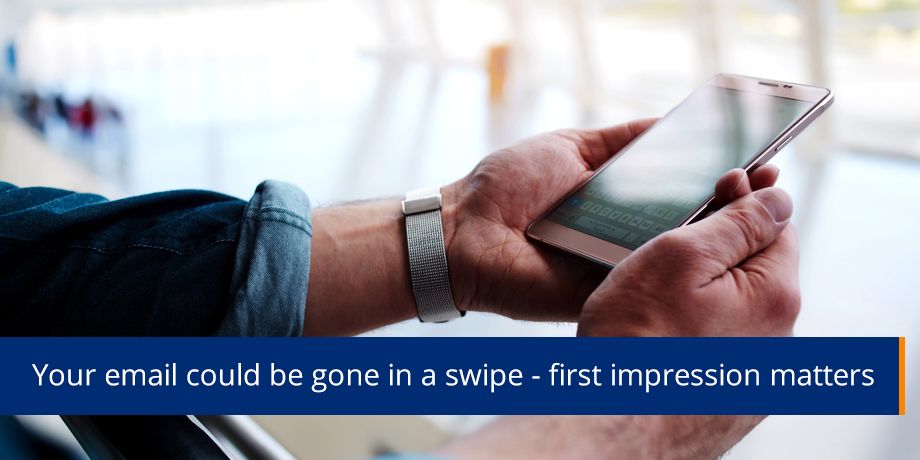According to Ross Sibbald, Head of eMarketing at global paperless communication specialist, Striata, inbox managers/consolidators could be the next disruptive technology that keeps digital marketers on their toes. “Inbox management tools such as Orchestra’s Mailbox, AOL’s Alto and Cloze will impact how we design and structure marketing emails, especially in geographies that lean heavily toward mobile device usage. But this also applies to early adopters of disruptive technologies in that the new ways they manage email may impact how a successful marketing email gets structured.
How do email marketers ensure that permission-based marketing emails have the best chance of achieving engagement with users of these new applications?
Sibbald says it is early days in that although some of the biggest names are launching or acquiring inbox management or consolidation applications (Dropbox recently purchased Mailbox) – they haven’t been in play for long enough or adopted broadly enough to have built critical mass. Nor have they enjoyed in depth coverage by market commentary.
“While there is a lot of reading available on designing email for mobile readers, there isn’t much public or formal opinion regarding the impact inbox managers may have on email design or structure. It is generally accepted that mobile design requires (amongst other things) punchy subject lines, fat-finger navigation and concise messages, but it still has to be tried and tested to determine best practice relating to inbox management applications,” explains Sibbald.
The premise of Mailbox (currently available for iPhone and Gmail) is to reach the nirvana of an empty inbox referred to as ‘Inbox Zero’. The application assists to manage email by classifying it out of the inbox and into priority streams. “Kind of like a triage process,” says Sibbald, “enabling the user to flag emails they wish to engage with and relegate those they aren’t that interested in. This could have a dramatic impact on whether your marketing email gets attention.”
Mailbox: Your email could be gone in a swipe – first impression matters
According to an industry insider’s opinion, Mailbox actually presents emails more favorably than the standard Gmail app for iOS. It is unlikely that email layout will have to adapt much to present well inside Mailbox. But, if you read the public comments, the amount of time an email has to make an impression just got shorter with the ability to snooze or file an email with one swipe. This means recipients will make a split-second decision on whether to return to your email, making the first impression the only thing that really matters.
“This places renewed emphasis on elements such as ‘From’ names and punchy subject lines. Emails from ‘humans’ (however that is defined by the application) are likely to get more of a chance. The subject line is a key element in getting your email read immediately, or at least flagged to be read later,” says Sibbald. Mailbox is however currently in a limited-user beta phase, and is yet to be made publicly accessible.
Cloze: Noise cancelling
Applications like Cloze promise to combine your email and social media into one easy-to-use interface through a process they call “noise cancelling.” By analyzing your email and social media history, Cloze assigns a score which is used to measure relationship strength and prioritizes communications accordingly. Says Sibbald, “this is even more of a challenge for marketers, as your email is not only competing against social media channels but is now filtered according to an algorithm imposed by the mailbox based on your most important contacts. Emails not sent from a ‘human” are likely to be bottom priority unless the user has manually amended the sender’s score to be included in their “Key People”.
In addition, Cloze assigns ‘Bulk Emails’ to a separate category which busy people are likely to ignore. This presents a new challenge to marketers, knowing that your marketing email is being separated out from ‘human sender’ email.
ALTO: email account consolidation and ‘smart stacks’
AOL’s ALTO, currently in a state of ‘private beta’, handles up to five different email accounts per user – meaning you can consolidate multiple mail accounts (AOL, Yahoo, Gmail) into one interface. The application will sort emails into “smart stacks” based on whether they contain attachments, photos, notifications or retail offers. Sibbald sees this as impacting email testing procedures, as not only do you need to check your design against the native email clients, but also against the new consolidators. “Alto users can customize their piles, making the email marketers challenge one that involves ensuring their emails get into the right stack.”
Mailbox, Cloze and Alto are not the only inbox managers that might impact email marketing. OtherInbox, Sanebox and ActiveInbox are all land grabbing in this space.
“Once this new wave of inbox managers or message consolidators gain traction, digital designers and content writers will, no doubt, need to adapt. Not only are people changing the way they read (analog vs. digital) and their device of choice (desktop vs. mobile), but the interface on which they access their email could be changing too. We’ll be watching these market changes closely to see how they will redefine email marketing best practice and shape our approach to email design,” concludes Sibbald.




